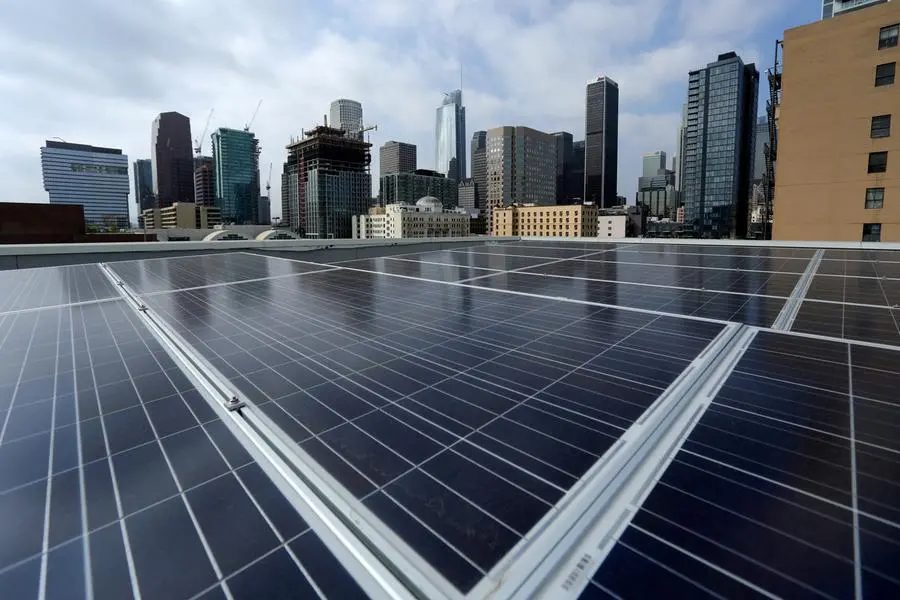PHOTO
The United States is expected to add a record 33 gigawatts (GW) of production capacity this year, up 55% compared with new capacity in 2022, but growth is expected to slow in 2024 amid economic challenges, a report published on Thursday showed.
The report by the Solar Energy Industries Association (SEIA) and Wood Mackenzie showed the U.S. solar industry added 6.5GW of new electric generating capacity in the third quarter, helped by record installation of residential solar.
However, changes to net energy metering policy in California and elevated interest rates across the U.S. are expected to lead to a brief decline next year before growth resumes in 2025, the report said.
"The U.S. solar industry is on a strong growth trajectory, with expectations of 55% growth this year and 10% growth in 2024," said Michelle Davis, head of solar research at Wood Mackenzie.
Solar accounted for 48% of all new electricity-generating capacity added to the U.S. grid through the first three quarters of 2023, the report said. By 2028, solar capacity in the United States is expected to reach 377GW, compared with 161GW now.
The utility-scale segment saw lowest level of new contracts signed in a quarter since 2018, owing to higher financing costs, transformer shortages, and interconnection bottlenecks, the report said.
California and Texas led the nation in new solar installations in the third quarter. Fourteen states and Puerto Rico installed more than 100 663 megawatts of new solar capacity in the same period.
Wood Mackenzie expects growth in the U.S. solar industry to average 14% annually over the next five years, but noted sustained growth will become more challenging in the longer term as interconnection bottlenecks and transmission capacity suppress the pace of installations.
(Reporting by Rahul Paswan and Brijesh Patel in Bengaluru; Editing by Gerry Doyle)





















